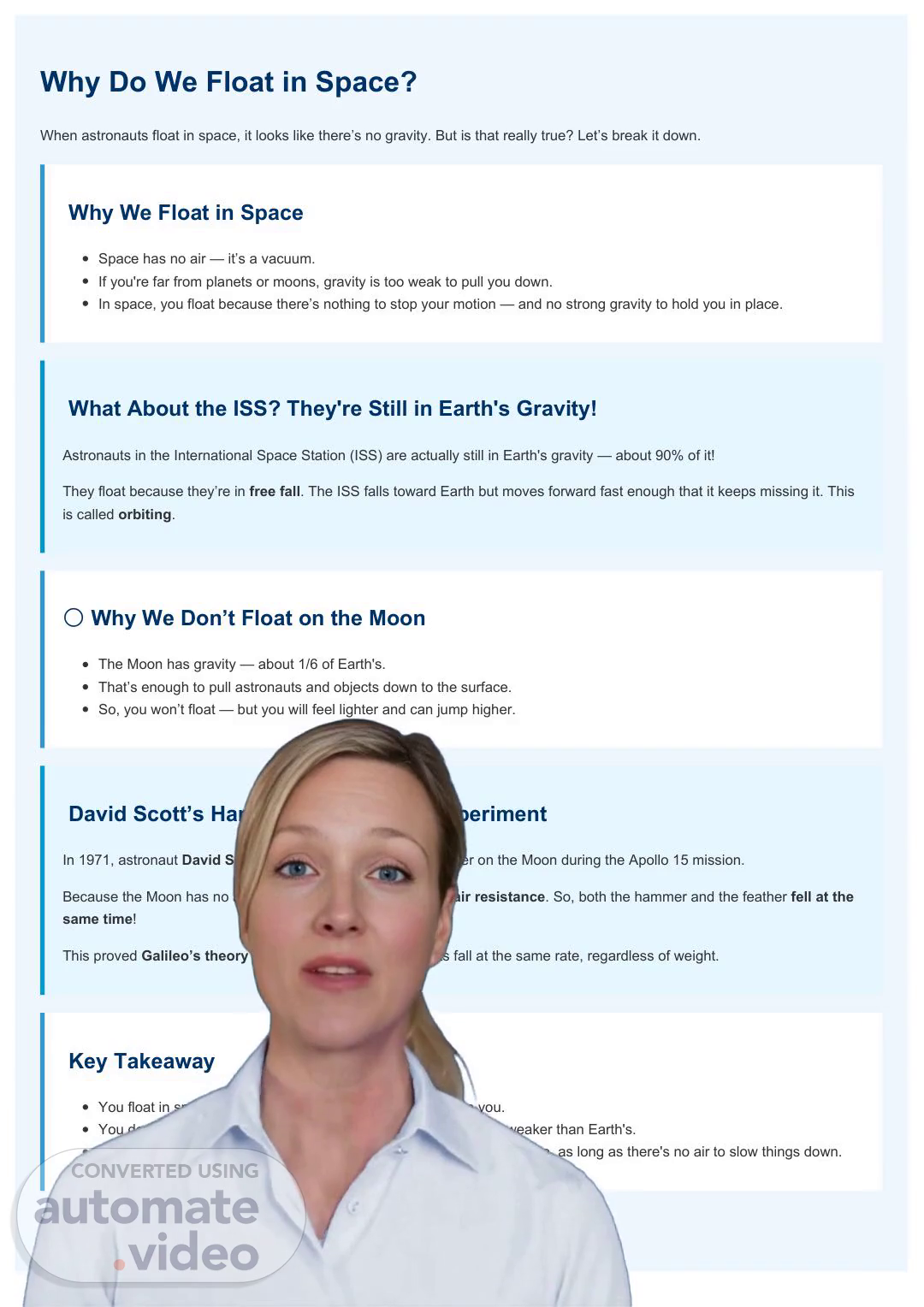Scene 1 (0s)
[Virtual Presenter] Hello everyone, welcome to our presentation on why we float in space. As we all know, when astronauts are in space, it seems like there is no gravity. But is that really true? Let's break it down. When we are in space, we are in a vacuum, which means there is no air. And when we are far from planets or moons, the gravity is not strong enough to pull us down. This is why we float in space - there is nothing to stop our motion and the weak gravity is not enough to hold us in place. But what about the International Space Station (ISS)? Even though it is in space, the astronauts are still in Earth's gravity, about 90% of it. They appear to float because they are actually in free fall. The ISS falls towards Earth, but it is moving forward fast enough to keep missing it. This is called orbiting. Now let's talk about the Moon. The Moon does have gravity, but it is much weaker than Earth's, only about 1/6 of it. This is enough to pull astronauts and objects down to its surface. So, you won't float on the Moon, but you will feel lighter and can jump higher due to the weaker gravity. This was proven by astronaut David Scott's famous hammer and feather experiment during the Apollo 15 mission in 1971. He dropped a hammer and a feather on the Moon. And because there is no atmosphere on the Moon, there is no air resistance. This means that both the hammer and feather fell at the same rate, proving Galileo's theory that all objects fall at the same rate without air, regardless of weight. So the key takeaway from this is that we float in space when there is little or no gravity pulling on us. And on a planet or moon with gravity, we will not float, no matter how weak the gravity may be. Astronaut David Scott's experiment on the Moon showed that gravity pulls everything the same, as long as there is no air to slow things down. Thank you for watching, this presentation was created for educational purposes. Have a great day!.
